#antitumor
Text
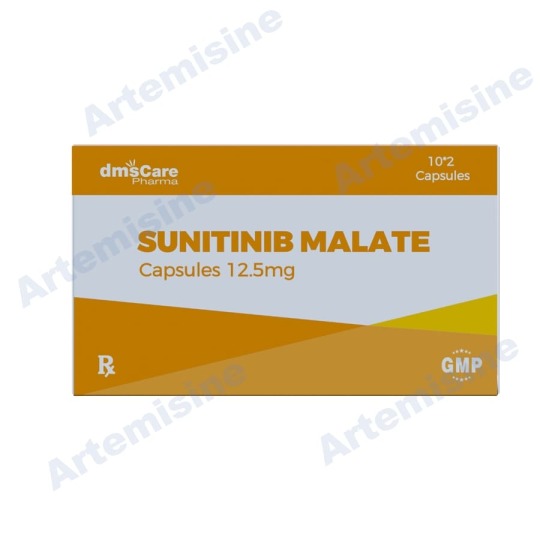
1 note
·
View note
Photo

A new study has found that inhibition of tumor intrinsic BANF1 activates antitumor immune responses via cGAS-STING and enhances the efficacy of PD-1 blockade. This is a promising development in the fight against cancer.
0 notes
Text
प्रियंगु I Callicarpa_macrophylla I Verbenaceae Analgesic Antipyretic Antitumor Diabetes Leucorrhoea
Safer-Effective-Better-Remedy
#प्रियंगु #Callicarpa_macrophylla #Verbenaceae #Analgesic #Antipyretic #Antitumor #Diabetes #Leucorrhoea #organic #fertilizer #nitrogen #CVDs #inflmmation #gastric_disturbances #hemorrhage #pitta_disorders #phosphorus #skincare #antiaging #antiwrinkle #biomedicine #diabetes #beta-carotene #soap ##healthylifestyle #money #flavonoids #antioxidants #aminoe_acids #proteins #diy #healthylifestyle…
youtube
View On WordPress
#Antitumor#Ayurveda#Callicarpa_macrophylla#diabetes#Herbal#Leucorrhoea#Medicinal plants#One health concept#Remedies#Unani#Verbenaceae#Youtube
0 notes
Text
Mushrooms Cure Cancer
KEY WORDS: antioxidant activities, antitumor, B-glucans, biological response modifiers, cancer patients, clinical studies, clinical trials, epidemiological studies, immunomodulation, interferons, interleukins, medicinal mushrooms, natural killercells, oncoimmunology, polysaccharides, quality of life, secondary Boletus edulis, Lactarius deliciosus, edible and medicinal mushrooms, chemical…
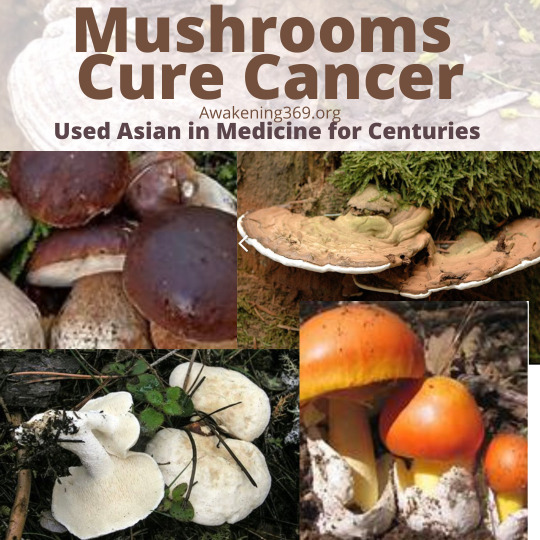
View On WordPress
#anti-oxidant capacity#antioxidant activities#antitumor#B-glucans#biological response modifiers#cancer patients#chemical characterization#clinical studies#clinical trials#edible and medicinal mushrooms#epidemiological studies#IC50#immunomodulation#interferons#interleukins#Lactarius deliciosus#medicinal mushrooms#mushrooms cure cancer#natural killercells#oncoimmunology#polysaccharides#quality of life#secondary Boletus edulis
0 notes
Text
Health Benefits of Dates!
Health Benefits of Dates!
Dates are the nutritious fruits of the date palm tree and are grown in the tropical regions of the world. Due to dates’ nutritional value and health benefits, they are very popular and consumed in most parts of the world in various forms. Dates are chewy and sweet in taste. Dates are considered to possess some really potent health benefits as they may help in boosting energy levels, are a rich…

View On WordPress
#Antiinflammatory#antioxidant#Antitumor#Carotenoids#Flavonoids#Good amount of fober#Good kidney health#Health benefits of dates#High nutritional value#Improves bone health#Improves brain health#Improves digestive process#Improves male fertility#Induce natural labor#Instant energy booster#Low glycemic index#Neurodegerative disease#Nourishes skin#Optimize intestinal movements#Prevents anemia#Prevents heart disease#Reduce cancer risk#Reduce hair loss#Reduce risk of night blindness#Reduces cancer risk#Regularize bowel movements#Relieves hangover
0 notes
Text
Study in mice significantly slowed tumor growth and activated anti-tumor immune response -- ScienceDaily
Study in mice significantly slowed tumor growth and activated anti-tumor immune response — ScienceDaily
Researchers from the University of Missouri School of Medicine have discovered a specific combination immunotherapy that shows promise in the fight against liver cancer.
The therapy involves a tumor-suppressing lipid molecule called nanoliposome C6-ceramide (LipC6) and an antibody for cytotoxic T-lymphocyte antigen 4 (CTLA4). When used together in this study, LipC6 and the anti- CTLA4 antibody…

View On WordPress
#activated#antitumor#Breast Cancer; Liver Disease; Cancer; Diseases and Conditions; Colon Cancer; Lung Cancer; Brain Tumor; Ovarian Cancer#Growth#immune#mice#response#ScienceDaily#Significantly#slowed#study#tumor
0 notes
Text
QUESTÃO ENEM RESOLVIDA: IMUNOLOGIA | VACINA CONTRA O CÂNCER
Resolução da questão ENEM 2022 sobre a utilização de variedade não patogênica de Trypanosoma cruzi como meio de apresentar antígenos tumorais ao sistema imune.
O protozoário Trypanosoma cruzi, causador da doença de Chagas, pode ser a nova arma da medicina contra o câncer. Pesquisadores brasileiros conseguiram criar uma vacina contra a doença usando uma variação do protozoário incapaz de desencadear a patologia (não patogênico). Para isso, realizaram uma modificação genética criando um T. cruzi capaz de produzir também moléculas fabricadas pelas células…

Ver no WordPress
#Antígenos#Anticorpos#antitumoral#biologia#cancer#células tumorais#defesa#ENEM#ENEM 2022#imunidade#Imunologia#protozoário#Sistema imune#tumor#vacina
0 notes
Text
Dosage, adverse reactions, and contraindications of pirarubicin
Pirarubicinis an anthracycline cell cycle non-specific antineoplastic drug synthesized from doxorubicin and dihydropyran. It is suitable for the treatment of breast cancer. It is also effective in patients with drug resistance.
The mechanism of action of the drug is that it can directly intercalate between DNA double strands, inhibit DNA polymerase, prevent nucleic acid synthesis, and prevent cells from dividing in the G2 phase, resulting in tumor cell death.
Dosage
Dissolve this product in 10ml of 5% glucose injection or water for injection. Intravenous, arterial, and intravesical infusion.
Intravenous administration: generally 25-40 mg/m2 per body surface area. For breast cancer, the recommended combination is 40-50 mg/m2 each time. It is administered on the first day of each course of treatment and can be repeated at 21-day intervals according to the patient's blood picture. For acute leukemia, the adult dose is 25 mg/m2 once based on body surface area.
Arterial administration: For head and neck cancer, 7-20 mg/m2 per body surface area, once a day, for 5-7 days, or 14-25 mg/m2 each time, once a week.
Intravesical administration: for the prevention of postoperative recurrence of superficial bladder cancer. According to the body surface area, 15~30mg/m2 once, diluted to 500~1000μg/ml concentration, injected into the bladder cavity for 0.5h, once a week, 4~8 times in a row; then once a month, a total of 1 year.
Doctors can adjust the time, dosage, and frequency of administration according to the patient's condition.
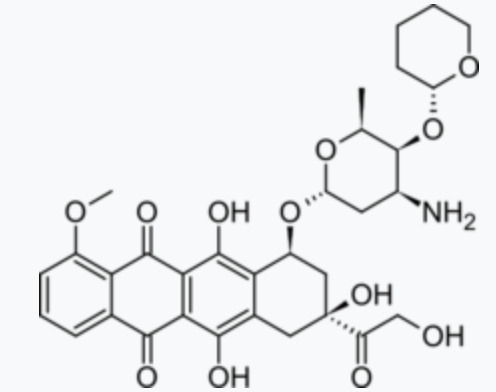
Adverse reactions
1. Myelosuppression is dose-limiting toxicity, mainly neutropenia, with an average minimum value of 14 days and recovery on the 21st day, anemia and thrombocytopenia are rare;
2. Cardiotoxicity is lower than doxorubicin, acute cardiotoxicity is mainly reversible ECG changes, such as arrhythmia or non-specific ST-T abnormalities, and chronic cardiotoxicity is dose-accumulating. The incidence of acute and chronic cardiotoxicity of this product is about 1/7 and 1/4 of doxorubicin.
3. Hair loss: The overall incidence of hair loss with this product is about 40%, which is significantly lower than that of doxorubicin (80%); the incidence of severe hair loss is about 20%, which is significantly lower than that of doxorubicin (60%).
4. Gastrointestinal reactions: nausea, vomiting, loss of appetite, oral mucositis, and sometimes diarrhea;
5. Others: abnormal liver and kidney function, skin pigmentation, etc., occasional rash. The intravesical injection can cause bladder irritation symptoms such as frequent urination, dysuria, occasional hematuria, and rarely bladder atrophy.
Taboo
1. Patients with obvious bone marrow suppression due to chemotherapy or radiotherapy are contraindicated;
2. Patients with severe structural heart disease or abnormal cardiac function and those who are allergic to this product are prohibited;
3. Patients who have used high-dose anthracyclines (such as doxorubicin or daunorubicin) are contraindicated;
4. Women of pregnancy, lactation, and childbearing age are prohibited.
Minbiotech is a Sirolimus supplier and factory, Minbiotech CAS 53123-88-9 sale, Sirolimus supplier, Welcome to visit our website.
Related news of Minbiotech bio-pharmacy
Where to buy sirolimus cheap
Introduction to Biosimilars
0 notes
Text
Chaga mushroom is a powerful anticancer, antitumor ally. Drink it in tea as a preventative! With all the toxins in our environment, and the cancer rates going up, we could all use some protection! If you know anyone who is battling cancer or has battled it before please share this valuable information.
#pay attention#educate yourselves#educate yourself#knowledge is power#reeducate yourself#reeducate yourselves#think for yourselves#think about it#think for yourself#do your homework#do some research#do your own research#ask yourself questions#question everything#healthy food#for your health#health tips#healthy living
96 notes
·
View notes
Text
Essential Oils: Peppermint Mentha piperita

The following information is from Essential Oils for Beginners: The Guide to Get Started with Essential Oils and Aromatherapy by Althea Press.
DESCRIPTION Peppermint essential oil is an amazing medicinal with a very strong aroma. It is widely used in a number of commercially produced products, and it makes a fantastic addition to many aromatherapy blends. Peppermint essential oil is derived from the leaves of Mentha piperita. This plant is prolific and easy to cultivate, making peppermint essential oil one of the least expensive on the market. This essential oil has a thin consistency and is typically steam distilled. In aromatherapy, it is used as a top note.
ORIGIN Egypt, Hungary, United States
PROPERTIES Analgesic, antibacterial, anticarcinogenic, anti-inflammatory, antiparasitic, anti- spasmodic, antitumoral, antiviral, digestive
APPLICATION Peppermint essential oil should be diluted 50:50 with a carrier oil prior to use. It is suitable for direct inhalation, diffusion, topical application, and ingestion.
PRIMARY USES Soothes aches, pains, and itchy skin, including psoriasis and eczema; eases tension and headaches; soothes respiratory infections and asthma; relieves nausea and other digestive problems; combats viral and fungal infections, including cold Peppermint essential oil provides a wonderful cooling sensation due to the high level of menthol it contains, and when used in a body mist, it provides a fast cooldown. It makes an excellent liniment for relaxing horses ‘muscles, and when horses inhale it prior to a training session, they often focus better. Peppermint essential oil is useful in the creation of nontoxic household products. It is also an aphrodisiac, particularly when diffused. When used in aromatherapy, peppermint essential oil promotes greater mental focus and can help make learning new information easier. It is useful for calming the mind and easing fear. In meditation, this essential oil helps break down resistance concerning new situations; it is also useful for increasing intuitive awareness.
SAFE USE Conduct a patch test before using peppermint essential oil on your skin. It must be diluted prior to application; blend one part peppermint oil with one part carrier oil before using it in products that will come into contact with your skin. If you get peppermint oil in your eyes or on a cut, expect to feel a severe stinging sensation. Do not apply water, as this will only make the feeling intensify. Flushing the area with a carrier oil will provide relief. Children younger than six years old do not tolerate peppermint essential oil well. Anyone with high blood pressure should avoid contact or ingestion.
#green witchcraft#green witch#nature witchcraft#nature witch#cottage witch#pagan witch#pagan community#witch community#witchblr
75 notes
·
View notes
Text
Decoding the Pharmacological Symphony of Turkey Tail Mushroom: An In-Depth Analysis of its Chemical Composition, Immunomodulatory Mechanisms, and Implications in Cancer Therapeutics 🍄🔬
Salutations, esteemed Tumblr intellectuals! Brace yourselves for a cerebral sojourn into the pharmacological labyrinth of Turkey Tail Mushroom, an exploration that transcends the ordinary and delves into the intricate interplay of its chemical constituents, the sophisticated mechanisms of immunomodulation, and the far-reaching implications of its therapeutic potential in the intricate landscape of cancer biology. Prepare your minds for an expedition into the realms of molecular complexity, immune orchestration, and therapeutic promise. Grab your favorite scientific journal, a pen, and perhaps a lab coat, for this journey is not for the faint of intellectual heart. ☕📚
Chemical Symphony: An Elaborate Choreography of Bioactive Compounds:
In the molecular ballet of Turkey Tail, bioactive compounds are the principal dancers, each executing a meticulously choreographed routine. Polysaccharopeptides (PSPs), intricate glycoproteins with immunomodulatory acumen, command attention. Through the fine-tuned modulation of immune responses, these compounds stimulate various facets of the immune system, orchestrating an elaborate dance that amplifies the body's ability to recognize and eliminate neoplastic cells. Concurrently, beta-glucans, linear glucose polymers, contribute to this biochemical ballet by fine-tuning immune cell responses, enhancing the overall antitumor immune surveillance.
Navigating the Anti-Tumor Terrain: A Molecular Expedition:
Our scientific cartography navigates the expansive anti-tumor terrain mapped out by Turkey Tail's polysaccharides. The inhibitory effects on tumor growth and metastasis are akin to molecular fortifications against cancer progression. Through intricate mechanisms involving the activation of natural killer cells, cytotoxic T cells, and macrophages, Turkey Tail emerges as a sentinel, curbing the unchecked proliferation of malignant cells. Additionally, its antioxidative prowess, rooted in compounds like ergosterol peroxide, further shields cellular structures from oxidative stress, a nexus in carcinogenesis.
Immersive References: Nourishment for the Inquisitive Intellect:
1. Stamets, P. (2012). "Turkey Tail: Old Medicine, New Hope." Integrative Medicine: A Clinician's Journal, 11(1), 54–59.
- Stamets' exposé weaves a tapestry connecting ancient medicinal wisdom with contemporary insights, shedding light on Turkey Tail's multifaceted potential.
2. Wasser, S. P. (2011). "Current findings, future trends, and unsolved problems in studies of medicinal mushrooms." Applied Microbiology and Biotechnology, 89(5), 1323–1332.
- Wasser's comprehensive review acts as a meta-analysis, synthesizing the current knowledge landscape of medicinal mushrooms, positioning Turkey Tail within the broader discourse.
3. Sun, J. E., Ao, Z. H., Lu, Z. M., Xu, H. Y., Zhang, X. M., & Dou, W. F. (2002). "Antihyperglycemic and antilipidperoxidative effects of dry matter of culture broth of Inonotus obliquus in submerged culture on normal and alloxan-diabetes mice." Journal of Ethnopharmacology, 95(2-3), 285–292.
- In the realm of metabolic interactions, this study offers a glimpse into the potential implications of Turkey Tail compounds in managing hyperglycemia and lipid peroxidation.
4. Kidd, P. M. (2000). "The use of mushroom glucans and proteoglycans in cancer treatment." Alternative Medicine Review, 5(1), 4–27.
- Kidd's magnum opus serves as a compendium, dissecting the applications of mushroom-derived compounds in cancer therapeutics, providing a nuanced understanding.
Empowering the Community: A Call for Translational Excellence:
Knowledge is a potent elixir, yet its administration demands finesse. As we unlock the mysteries of Turkey Tail Mushroom, let us champion translational excellence, bridging the realms of bench and bedside. Always, without exception, seek the counsel of healthcare professionals, for personalized insights into the delicate interplay of molecular intricacies. Our collective journey extends beyond unraveling the pharmacological nuances; it's a clarion call to empower our community with the technical acumen to navigate the dynamic expanse of cancer research. 🌐💚
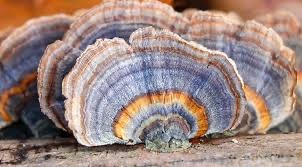
Your musings on this intricately detailed exploration are most welcome!
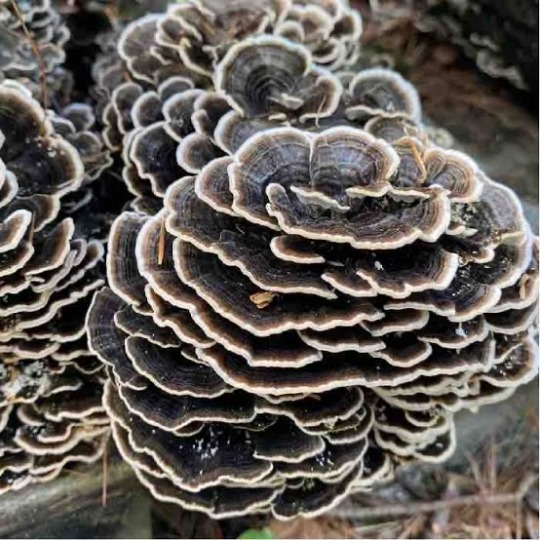
#science#biology#college#education#school#student#medicine#doctors#health#healthcare#mushrooms#turkey tail#chemistry#cancer#cancer treatment
24 notes
·
View notes
Text
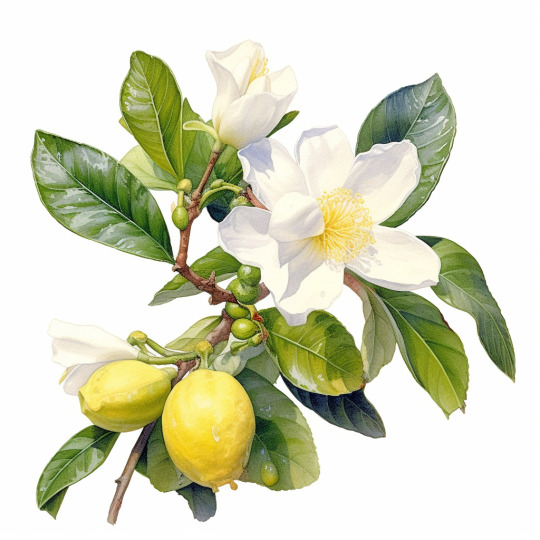
Gardenia
Also known as : Zhi Zi, Cape Jasmine
Scientific Name : Fructus Gardenia Jasinoides
Identification : An evergreen shrub with scented flowers and Orange fruit. Originally from the Southeastern provinces of China.
Properties : Abortifacient, Anti-cancer, Anti-hypoxic, Anti-inflammatory, Anit-mutagenic, Anti-oxidant, Anti-periodic, Anti-pryetic, Antiseptic, Antispasmodic, Antitumor, relaxant, staunches bleeding
Uses : depression, anxiety, insomnia, bleeding/bruises, cancer, skin cancer, headaches, cystitis, cramps and digestive issues
Try It : 6-12g of dry fruit taken will reduce altitude sickness taken for two day prior to flight.
Warnings : Do not take if suffering from diarrhoea, Use nothing but the Fruit.
Parts used: Fruit
Magic : Love, passion, used in poppets to attract others.
Planet : Moon
Element : Water
Deities : Isis, Diana, Morrigan, Luna, Sulis
Folklore and History: Under its original guise Zhi zi it has been a valued medicinal herb for over 2000 years. Within Chinese medicine it is considered a cooling herb. Hence used mainly for issues associated with heat (for example, Fever, Cystitis and irritability).
Plant Tips : Fruit is harvested when it turns a reddish-yellow colour.
For Refences and bibliography please Click here
21 notes
·
View notes
Text
#cbd#glioblastoma#cannabis#marijuana#weed#pot#legalization#medical marijuana#mmj#medical cannabis#legalize#nih#national institutes of health
2 notes
·
View notes
Note
how safe are weed vapes compared to like regular vapes? I've recently heard vapes are like horrible for you cus you're just smoking a shit ton of chemicals but does that depends on what's being smoked?....since you said the weed is just being heated up is there less chemical intake overall or just less combustion byproduct like you said before (sorry if this makes like no sense I'm not familiar with this stuff at all or how it works lol but I also had a really bad experience with edibles and have bad lungs so I just wanted to know a bit more)
Hey sorry for responding so late I had gotten most of this post done after you first sent it but I ran out of energy and got too perfectionistic. Anyways here it is:
Excellent question! The first formal modern e-liquid vape was only released in 2003, though various attempts had been made earlier, which means we are still researching the long-term effects they have on health. When the average person says "vape", they almost exclusively mean "e-liquid vape".
Currently, what we can see about e-liquid vapes: They're not very good. They do reduce some smoking risks (no tar) but introduce other risks, and have a reputation of being safer and a potential smoking cessation aid while a reality of unregulated and poorly sourced ingredients which can cause acute and lasting lung damage.
Dry herb vaping, which is what I recommend, is much more straightforward, but only recently popularized and thus still needing more research.
At the risk of being a square: Any time you intentionally inhale something other than air, you're introducing more risk than if you simply never smoked or vaped anything. But like don't let that stop you, we take on risk all the time, that's what harm reduction's all about babey
Dry Vapes are Not Vapes
A vape or e-cigarette is a device that heats and vaporizes a liquid carrier with a suspension of the psychoactive chemical, either nicotine or THC. These are what people think of when they think of vapes, and these are generally the most problematic for having untested and unregulated chemicals while being touted as healthier.
A dry vape/dry herb vaporizer is the method I recommend, which heats the plant material (or concentrate like wax--I haven't done this myself personally) and evaporates the cannabinoids and terpenes without combustion. It's basically like baking your weed in a tiny oven.
This method was popularized most recently in 1993 with Eagle Bill's Shake and Vape, though apparently the principle of boiling vapor has existed since ancient times.
General Smoking Health Risks
Tobacco and weed both produce "tar" when burned--a catch-all for a variety of chemicals, many of which are carcinogenic, produced during combustion. The tar isn't made from the THC or the nicotine, but from the plant matter itself and its additives. If you burn plant matter and inhale the smoke, you inhale a certain number of toxic and carcinogenic chemicals.
There is some conflict on if smoking weed causes cancer. It certainly doesn't carry the same correlation as tobacco, but the reasons are unknown. We don't have long-term studies verifying a connection between the two. Very preliminary lab tests suggest that THC and CBD have antitumor effects, but it'll be a while before we can figure out the deal. There is still risk!!!
Regardless, the deposition of tar in lungs is an irritant and increases risks of things like bronchitis. For someone with asthma or weak lungs, smoking of any kind causes problems.
E-Cigarettes, or e-liquid vapes
E-cigarettes were manufactured to counter tobacco cigs starting in 2003. An e-cig heats a liquid with a suspension of nicotine, atomizing it into droplets of vapor that are then inhaled.
The liquid is usually propylene glycol or glycerol with other additives like flavorants. It seems like propylene glycol and glycerol have been safe for ingestion as a food additive, but being atomized in an inhaled form is pretty new and the effects aren't well-known.
The major issue is that we don't have a standardized and proven-effective vape juice formula. E-liquid is poorly regulated and many samples contain entirely unidentified substances.
This is the major cause for concern.
THC vape liquids have similar issues, including being cut with Vitamin E acetate, which was correlated with a string of vaping-related lung disease, though not fully confirmed to be the culprit.
Hopefully this delineates why vaping, as in e-liquid vaping, is problematic, and why dry vape is comparatively safer.
Why dry herb vape?
The boiling of the material introduces fewer (but not 0) unknown or undesired chemicals into the airstream. You're primarily getting the cannabinoids.
On a user experience level: It's quite weed-efficient, the weed tastes better w/o the smoke, it produces less smell, the vapor is less harsh on the lungs (you can and will still cough if you inhale too much tho), not much less portable than a joint
You can get a bong adapter and get megahigh still (I do have a bong but I don't like getting that fucked up)
Some vapes can heat concentrates, wax, etc. for potent highs (I haven't done this. But you can. Research yourself)
The already vaped bud (AVB) can be saved and reused for edibles, extracts, and concentrates; it's gonna be stripped of a lot of the psychoactives already, but not all of them--obvs be mindful of dosing here
Downsides: You do have to recharge battery vapes and get over the learning curve of batteryless (I'm pretty shit at using mine). You also have to clean your equipment every once in a while which is nbd for me who likes cleaning but yknow it does require upkeep. Easier than cleaning a bong tho
So, could you dry vape tobacco?
You can, but you probably shouldn't. Nicotine itself is highly physically and psychologically addictive and classified as toxic, and while it isn't considered carcinogenic, it is potentially a tumor promoter.
Pretty much everyone I know who's on nic tells me they don't like it, they wish they could quit, and they would never want me or anyone else to start.
Last, some Dry Herb Vaporizer Tips
Controlling the temperature allows you to control which cannabinoids are released to a certain extent.
Hot vapor can still irritate your lungs. Keeping a relatively low temperature (Guides indicate the best range) and having a long enough vapor path that the vapor can cool will help you have a smoother inhale.
Do not use a vaporizer with cheap elements. Plastic near the heating element will cause by-products.
Contaminants and pesticides can be inhaled, source your material appropriately
Overheating can still cause combustion. You will smell, taste, and see smoke if this happens.
All the physical and psychological risks of weed are present--Take it easy, know your limits, don't vape or smoke when you're in an unstable state, etc.
Thanks for reading, I hope this helps you make informed decisions and potentially find a way of intaking weed that suits your needs :) If you have any more Qs I'll try to answer (IN FEWER WORDS)
#indexed post#LONG POST#weed#vaping#vape#dry herb vaporizer#Also I don't want to plug brands that hard you can look on reddit for recs but#I got a combo deal of the potv ONE (battery) and the dynavap M (batteryless) for like $160 on sale and#while its an investment it's very worth it imo. Again the general efficiency and the AVB add a lot#I am not a heavy user by any means but I like. Have so much weed. I cant go thru it all.#Cuz its very efficient you can squeeze like 2-3 sessions out of one chamber of weedwhich is like#Idk how much goes into one pot its probably like 0.5-2g.
15 notes
·
View notes
Text

(copy-paste)
Chise. Senior Scientist / Vaccine Research & Development:
"So, not COVID related, however, this is REALLY exciting news. For the FIRST time ever, we have evidence that it IS possible to develop a functional immune response that can treat patients’ cancer based on Phase 2b trial results of an investigational personalized cancer vaccine!
Phase 2b KEYNOTE-942/mRNA-4157-P201 trial of mRNA-4157/V940, in combination with KEYTRUDA®, Merck's anti-PD-1 therapy, demonstrated a statistically significant and clinically meaningful improvement in the primary endpoint of recurrence-free survival (RFS) versus KEYTRUDA alone for the adjuvant treatment of patients with stage III/IV melanoma following complete resection.
Adjuvant treatment with mRNA-4157/V940 in combination with KEYTRUDA reduced the risk of recurrence or death by 44% compared with KEYTRUDA alone. These results are the first demonstration of efficacy for an investigational mRNA cancer treatment in a randomized clinical trial.
Needless to say, that is ASTOUNDING. In the study, patients were randomly assigned to receive one of two treatments. One group was treated with the drug pembrolizumab, or Keytruda, an existing medication that releases the brake that the immune system normally has on attacking cancer cells, since cancer cells grow from the body’s own cells.
The other group received Keytruda and a personalized cancer vaccine using mRNA technology. All of the patients had surgery to remove their melanoma, and for the vaccine group, scientists biopsied and genetically sequenced those tumors, then identified nearly three dozen genetic, personalized tumor flags, in the form of mRNA, for each patient’s immune system to recognize.
These were then combined and injected in patients’ arms-in the same way that the COVID-19 vaccine delivered instructions to target the virus’ spike protein genes. Except in this case, the immune system was trained to target and destroy melanoma cells rather than a virus.
So, how exactly does this work? Personalized cancer vaccines are designed to prime the immune system so that a patient can generate a tailored antitumor response specific to their tumor mutation signature. mRNA-4157/V940 is designed to stimulate an immune response by generating specific T-cell responses based on the unique mutational signature of a patient's tumor.
mRNA-4157/V940 essentially consists of a single synthetic mRNA coding for up to 34 neoantigens that is designed and produced based on the unique mutational signature of the DNA sequence of the patient's tumor. Upon administration into the body, the algorithmically derived and RNA-encoded neoantigen sequences are endogenously translated and undergo natural cellular antigen processing and presentation, which is a key step in adaptive immunity.


ID: The key to the vaccine's success seems to be that it is tailored to each patient's tumor, allowing each patient to mount a precise and targeted response to their cancer. The flexibility of the mRNA technology makes that possible, as COVID-19 vaccine development demonstrated. It took about six weeks for scientists to generate each personalized mRNA cancer vaccine.
Patients will be followed for at least one more year, and possibly more after completing the treatment. Scientists will monitor how long- lasting the immune response is, and how well it holds up to future recurrences or metastases. If the results are confirmed, it may also be possible to use the vaccine in people at earlier stages of the disease, or even in people without melanoma who are at higher risk for it to prevent them from developing tumors in the first place.
KEYNOTE-942 is an ongoing randomized, open-label Phase 2b trial that enrolled 157 patients with stage III/IV melanoma. Following complete surgical resection, patients were randomized to receive mRNA-4157/V940 (nine total doses of mRNA-4157) and KEYTRUDA (200 mg every three weeks up to 18 cycles [for approximately one year]) versus KEYTRUDA alone for approximately one year until disease recurrence or unacceptable toxicity. The primary endpoint is recurrence-free survival, and secondary endpoints include distant metastasis-free survival and safety.
Key eligibility criteria for the trial included:
patients with resectable cutaneous melanoma metastatic to a lymph node and at high risk of recurrence, patients with complete resection within 13 weeks prior to the first dose of KEYTRUDA, patients were disease free at study entry (after surgery) with no loco-regional relapse or distant metastasis and no clinical evidence of brain metastases, patients had a formalin fixed paraffin embedded (FFPE) tumor sample available suitable for sequencing, Eastern Cooperative Oncology Group (ECOG) Performance Status 0 or 1 and patients with normal organ and marrow function reported at screening.
Companies plan to discuss results with regulatory authorities and initiate a Phase 3 study in melanoma in 2023 and rapidly expand to additional tumor types."
End ID.
"KEYTRUDA is an immunotherapy that works by increasing the ability of the body's immune system to help detect and fight tumor cells. Based on early clinical studies, combining mRNA-4157/V940 with KEYTRUDA may potentially provide an additive benefit and enhance T cell-mediated destruction of tumor cells.
Patients were treated and monitored for at least two years. The company has only reported patient outcomes so far- not details of the vaccinated patients’ immune responses, such as their T-cell levels, which vaccines train to recognize and eliminate pathogenic cells.
That data is being collected and that analysis will be provided in future presentations or publications. While there much more work to do, and scientists will attempt to figure out if the 44% reduction can be pushed even further, it is a transformational moment for the field of cancer treatment. No one has ever demonstrated that mRNA vaccines could work in a randomized controlled trial in cancer, but now, data is starting to show that they absolutely can. You can read more here:
https://time.com/6240538/mrna-cancer-vaccine-moderna/
https://investors.modernatx.com/news/news-details/2022/Moderna-and-Merck-Announce-mRNA-4157V940-an-Investigational-Personalized-mRNA-Cancer-Vaccine-in-Combination-with-KEYTRUDAR-pembrolizumab-Met-Primary-Efficacy-Endpoint-in-Phase-2b-KEYNOTE-942-Trial/default.aspx
23 notes
·
View notes
Text
Artikel Ilmiah
"Obat Herbal Pereda ISPA pada Balita"
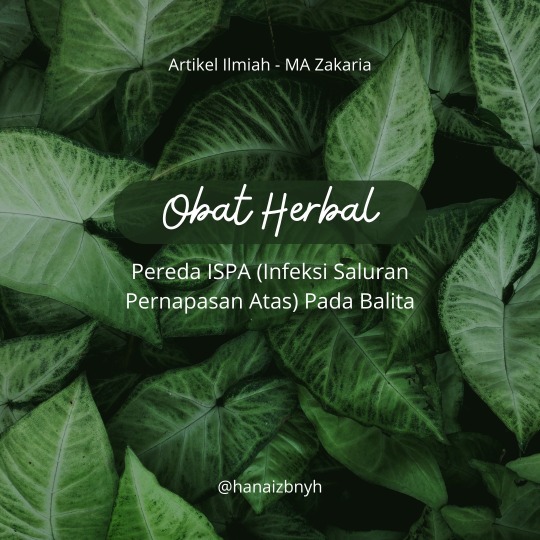
Bahan-bahan herbal yang sering dijumpai seperti jahe, kunyit, kencur, dan sebagainya merupakan bahan alam yang selalu menjadi alternatif obat dari berbagai penyakit. Salah satunya ISPA atau Infeksi Saluran Pernapasan Atas adalah radang saluran pernapasan atas yang disebabkan oleh infeksi jasad renik atau bakteri, virus, tanpa atau disertai renkim paru-paru. Penyakit ISPA sering terjadi pada anak karena sistem pertahanan tubuh masih rendah. Salah satu tanda dan gejala penyakit ISPA ialah batuk-pilek, kejadian batuk pilek pada anak di Indonesia diperkirakan 3 sampai 6 kali setahun. Influenza merupakan salah satu penyakit ISPA yang mendapat perhatian, karena penyakit ini dapat menimbulkan wabah sesuai dengan Peraturan Menteri Kesehatan RI No.1501/Menkes/Per/X/2010 Tentang Jenis Penyakit Menular Tertentu Yang Dapat Menimbulkan Wabah Dan Upaya Penanggulangan (Kementerian Kesehatan, 2013).
ISPA mempunyai gejala yang bervariasi, seperti demam, nyeri tenggorokan, pilek, hidung mampet, batuk kering, batuk berdahak, atau bahkan bisa menimbulkan penyakit komplikasi seperti pneumonia dengan gejala sesak napas. Faktor atau cara penularan ISPA ini dapat ditularkan melalui seseorang yang bersin tanpa menutup mulut dan hidung, air ludah, dan bahkan kurangnya ventilasi dan banyaknya asap, seperti asap rokok atau pun asap dari pembakaran sembarangan.
Obat herbal tradisional bisa menjadi pereda dari penyakit ISPA (Infeksi Saluran Pernapasan Atas) pada balita. Dengan pemanfaatan jahe, kunyit, madu, dan sebagainya, bisa menjadi pereda untuk penderita ISPA khususnya pada balita.
Lalu, apa saja kandungan yang terdapat dalam obat herbal tersebut?
1. Jahe (Zingiber officinale)
Pemberian minuman jahe madu dapat menurunkan keparahan batuk pada anak, karena kandungan minyak atsiri dalam jahe yang merupakan zat aktif yang dapat mengobati batuk. Anak yang telah diberikan minuman jahe madu oleh peneliti gejala keparahan batuk seperti batuk berdahak, pilek, rewel, tidak nafsu makan dan gejala lainnya menjadi berkurang.
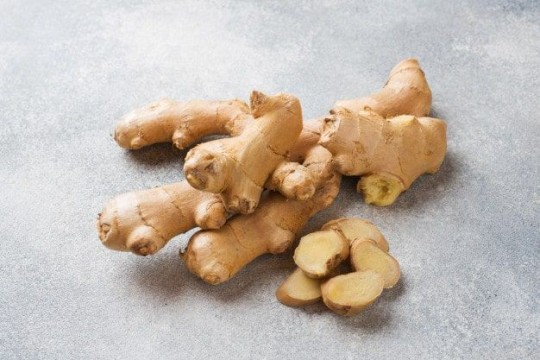
2. Kunyit (Curcuma longa)
Kandungan kunyit adalah minyak atsiri, kurkumin, dimetoksin kurkumin, arbinosa, fruktosa, glukosa, pati, tannin, magnesium besi, kalsium, natrium, dan kalium. Berdasarkan kandungan tersebut maka kunyit memiliki efek herbal atau khasiat untuk menjaga stamina, hepatoprotektor, diuretic, antioksidan anti radang, immunomodulator, dan antikanker. Juga bersifat antiinflamasi, anti hiperkolesterolemia, antiproliferative, dan antitumor. Bubuk kunyit bisa mengobati hidung meler, sakit tenggorokan pada anak ketika balita batuk pilek.
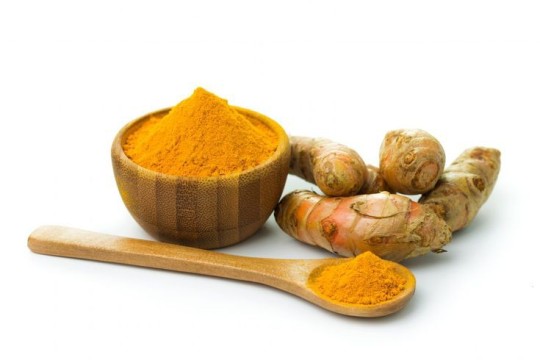
3. Madu
Kandungan antimikrobanya membantu melawan virus penyebab flu, rasa manis pada madu membantu produk saliva yang bisa mengencerkan lendir sehingga mudah untuk dikeluarkan. Madu mempunyai efek antimikroba yang bertanggung jawab atas aktivitas antibakteri sehingga membantu melawan agen penyebab ISPA.

4. Kencur (Kaempferia galanga L.)
Kencur dimanfaatkan untuk menyembuhkan batuk, peluruh dahak atau pembersih tenggorokan, menghilangkan lendir yang menyumbat hidung, dan menghangatkan. badan.

5. Lemon (Citrus limon)
Lemon memiliki kandungan senyawa yang meningkatkan sistem kekebalan tubuh dalam melawan sakit dan radikal bebas di dalam tubuh. Perasan jeruk lemon dengan madu merupakan obat herbal untuk meredakan batuk pilek secara efektif.
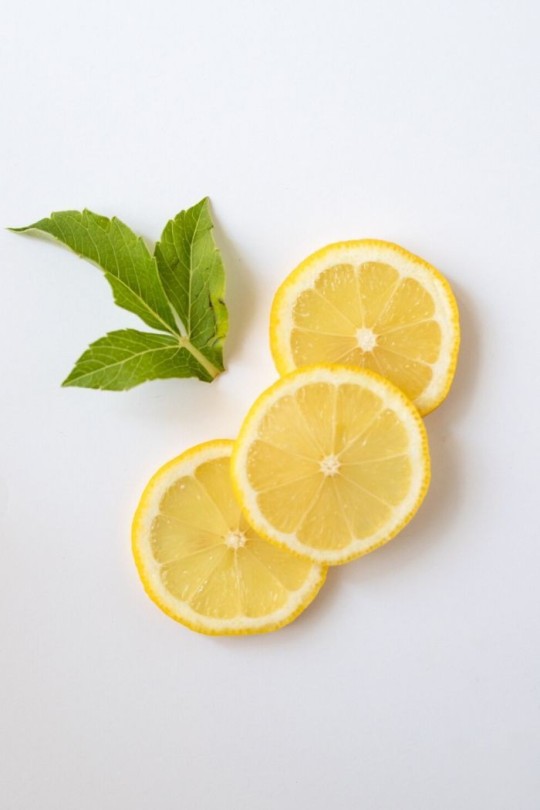
6. Bawang Merah (Allium cepa)
Ekstrak bawang merah efektif terhadap bakteri yang terdapat di udara dan salah satu bakteri koinfeksi ISPA (Infeksi Saluran Pernapasan Atas) yang disebabkan oleh virus.
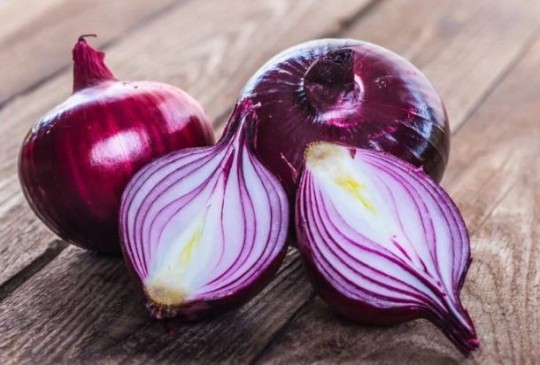
Bagaimana cara pengolahannya? Menurut buku Ensiklopedi Tanaman Obat Indonesia (Haryanto, 2012)
Salah satu cara membuat ramuan untuk salah satu penyakit ISPA (Infeksi Saluran Pernapasan Atas), yaitu dengan menyiapkan lengkuas; temulawak; halia; keningar; daun pecut kuda; daun iler; dan daun kayu manis secukupnya. Kemudian, semua bahan ditumbuk halus dan direbus dengan 3 gelas sampai air mendidih, dan diminum 2 kali sehari (pagi dan sore). Selain itu, pembuatan obat herbal untuk flu dengan bahan lemon; minyak kayu putih; dan kapur sirih. Lemon dipanggang dan diperas, dan dicampur dengan air dan bahan lainnya, kemudian diaduk sampai merata dan disaring. Cara lainnya yaitu dengan cara minum perasan air lemon dicampur dengan kecap dan garam secukupnya.

Dengan cara pengolahannya yang mudah diikuti di rumah dan bahan-bahan yang mudah dijangkau, kita bisa membuat obat herbal untuk meredakan ISPA.
Sekian, terima kasih!
Hana Izbiniyah - XI IPA 2
23 notes
·
View notes